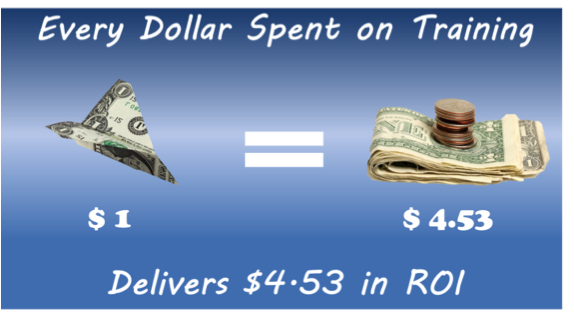 Retaining employees is, or should be, on everyone’s mind. After you’ve done the hard work of finding and selecting good candidates for your company, you want to keep them. It’s expensive and time-consuming to replace employees. A recent Society of Human Resource Management (SHRM) study predicts that every time a business replaces a salaried employee, it costs six to nine months’ salary, on average. For a manager making $40,000 per year, that’s $20,000 to $30,000 in recruiting and training expenses.
Retaining employees is, or should be, on everyone’s mind. After you’ve done the hard work of finding and selecting good candidates for your company, you want to keep them. It’s expensive and time-consuming to replace employees. A recent Society of Human Resource Management (SHRM) study predicts that every time a business replaces a salaried employee, it costs six to nine months’ salary, on average. For a manager making $40,000 per year, that’s $20,000 to $30,000 in recruiting and training expenses.
Costs vary based on position. For example, it might cost 16% of the annual salary for high-turnover, low-paying jobs (earning under $30,000 a year). That means the cost to replace a $10/hour employee could be over $3,300. The expenses include advertising the position, screening applications, hours spent preparing for and interviewing selected applicants, screenings for the person who gets an offer such as drug tests and background checks—all that adds up quickly. It only makes fiscal sense to retain employees that you hire.
Last week I talked about talent development being the second most important factor in attracting employees, especially millennials. It’s also a powerful retention tool.
 Studies have shown that for every dollar spent on training and employee development, there’s a return on investment (ROI) of four dollars fifty-three cents to the company. That’s a whopping 354% ROI! I’m sure we wish all our investments paid off at this rate. Even so, we have to be cost-conscious when planning development and training events. We need to put our efforts where we’ll see the best return for the most cost-effective investment. The first step in that process is to develop a learning culture.
Studies have shown that for every dollar spent on training and employee development, there’s a return on investment (ROI) of four dollars fifty-three cents to the company. That’s a whopping 354% ROI! I’m sure we wish all our investments paid off at this rate. Even so, we have to be cost-conscious when planning development and training events. We need to put our efforts where we’ll see the best return for the most cost-effective investment. The first step in that process is to develop a learning culture.
Learning Culture
A learning culture is a powerful asset to retain employees over the course of their careers. It has five characteristics: learner-centered, continuous, decentralized, shared, and all about results.
Learner-centered: In a learning culture, the responsibility for learning resides with each employee and each team—it’s learner-centered. Employees are expected to seek out the knowledge and skills they need, when and where they need them.
Continuous. A learning culture recognizes that learning happens all the time. Yes, at events and conferences, but also on the job, through coaches and mentors, from smartphones and tablets at the moment it’s needed—how many of you have searched on your phone or tablet for how to do something right when you need it? Learning happens socially, in casual and unexpected settings—like talking to other parents at extracurricular activity practice–and from trial and error.
Decentralized. In a learning culture, everyone contributes. The whole organization is engaged in facilitating and supporting learning so the learning is decentralized. The training team and/or HR guides and coaches development to make sure it’s effective.
Shared. In a learning culture, everyone shares knowledge freely. Everyone learns from the hits and misses across the board which creates a more sustainable and adaptable organization.
All about results. In a learning culture, what matters is the knowledge and skills that employees acquire and how they’re applied in the workplace. What is the impact on achieving the organization’s strategic goals?
The next step to achieving the best training and development ROI is to provide training on what employees need to know. You won’t retain employees who are frustrated because they aren’t performing as well as they could if they received relevant training. Target role-specific knowledge and skills for current needs and provide learning opportunities for future roles. For example, let’s say you just hired Brenda in a sales role. At first, she’ll need onboarding and training for sales in your company. As she grows proficient in her sales role, she may think about moving into management in the future. Then she’ll need management skills, including interviewing and hiring people. In order to keep Sarah, your organization needs to provide development opportunities that will help her now and in the future.
There’s another important component to the equation. Although Sarah thinks she wants to move into management, would she really be suited for the role? You have to consider what’s best for your organization as well as what’s good for Sarah. Even if she acquires all the skills, does she have the traits that would make her successful?
Some role-specific skills and traits are obvious, but others are more subtle. Fortunately, there are tools that you can use that help identify the skills and traits needed to be successful in a role, such as Harrison Assessments. Employees who experience job success tend to perform better and be happier with their jobs. It’s easier to retain employees who are happy.
If you follow these steps, you’ll be on the path to cost-saving employee retention and maximizing your talent development ROI.
Visit my website, www.theperformancedifference.com, or email me at laurie@theperformancedifference.com, to learn more about how to retain and develop the best employees for your company.
Recent Posts
Recent Podcasts
- 10 Mar 2014Organizational Creativity
- 24 Feb 2014Interactive Learning Platforms
- 24 Feb 2014Civility in the Workplace
- 24 Feb 2014The Essence of Leadership
Contact Details
- 3463 Chastain Glen Lane
Marietta, GA 30066 - 678-761-3550
- info@theperformancedifference.com
- Contact Form
